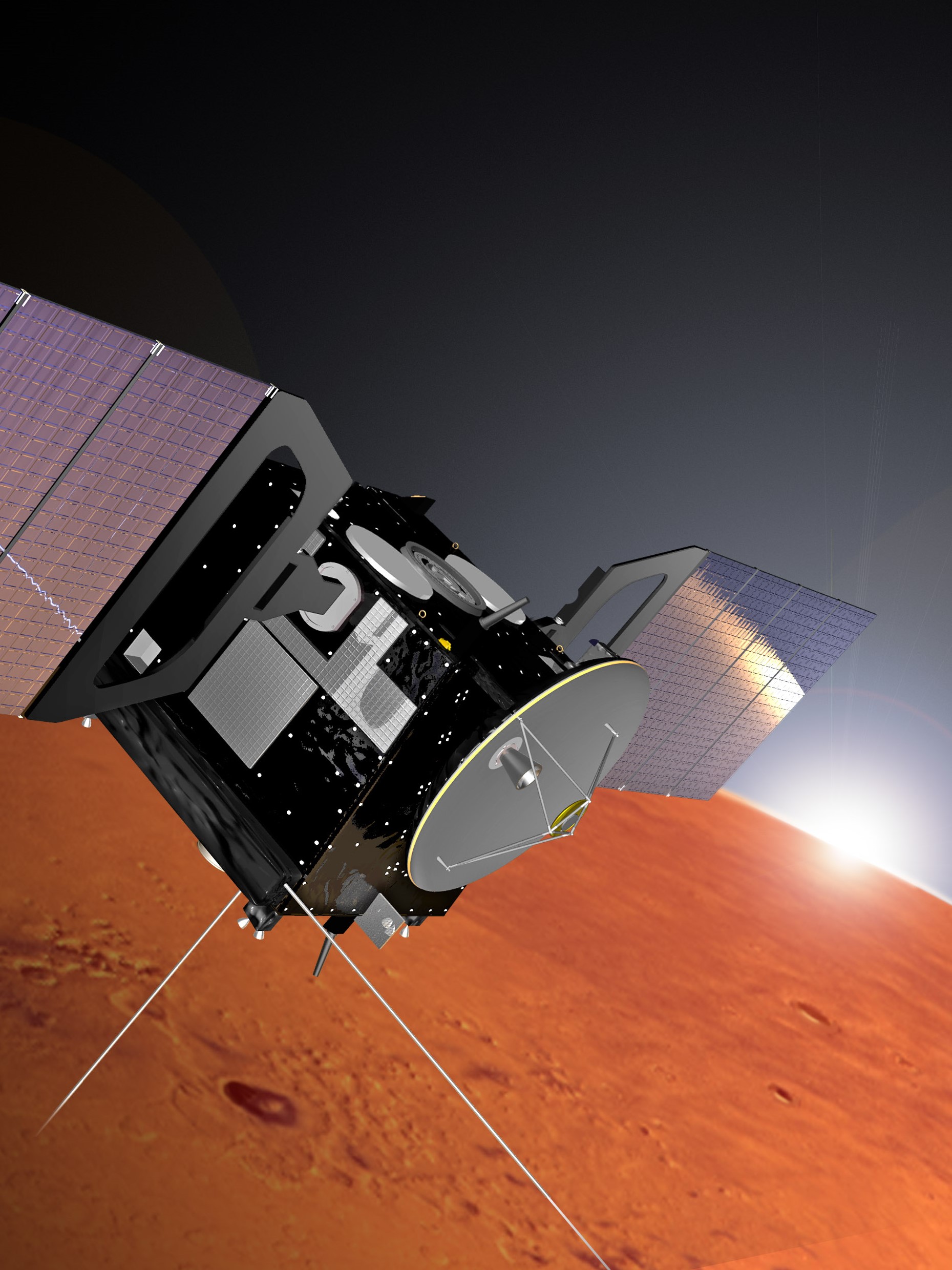28 AUGUST 2002
ESA DEVELOPS MISSION CONTROL SOFTWARE
SCOS-2000, the ESA-developed generic mission control system software, marked its operational debut for the launch and LEOP of MSG-1. Originally developed to support ESA missions, the software is now being promoted as a product and licenses are granted in the fields of space research and technology.
5 MARCH 2003
ESA'S FIRST DEEP-SPACE GROUND STATION
ESA's first deep-space ground station for interplanetary and distant orbit spacecraft missions, the 35-m station at New Norcia in Western Australia, was inaugurated on 5 March 2003. A second 35-m antenna in Cebreros, Spain, was inaugurated on 28 September 2005 and a third at Malargüe, Argentina, on 18 December 2012. The stations are remotely controlled from the Estrack Network Operations Centre in ESOC.
3 JUNE 2003
MARS EXPRESS LAUNCH
Mars Express departed Earth for Mars on 2 June 2003. The intrepid spacecraft was ESA's first interplanetary mission and solving problems during its journey and arrival at Mars were major accomplishments for teams at ESOC. Mars Express was successfully captured by Martian gravity, marking the first ever successful arrival at Mars on a space agency's first attempt. Its Beagle lander, however, was lost during landing. MEX continues to be used for many scientific and operational activities today such as relaying data back to Earth from Mars landers and rovers from partner space agencies.
14 JANUARY 2005
HUYGENS LANDS ON TITAN
After its seven-year journey through the Solar System on board the Cassini-Huygens spacecraft, ESA's Huygens lander successfully descended through the atmosphere of Titan, Saturn's largest moon to land on its surface. The first scientific data arrived at ESOC at 17:19 CET. Huygens was humankind's first successful attempt to land a probe on another world in the outer Solar System. It began transmitting data to Cassini four minutes into its descent and continued to transmit data after landing.
11 APRIL 2006
VENUS EXPRESS ENTERS ORBIT
Ground controllers at ESOC confirm the end of the Venus Express main engine burn and entry into an initial, highly elliptical orbit, at 13:30 CEST. The ground team use data that the spacecraft has been sending down to Earth after the first communication link is established at 11:12 CEST to make the confirmation, marking the second arrival (after Mars Express) of ESA into orbit around another planet.
2 APRIL 2007
ESA & NASA SIGN NETWORK & OPERATION CROSS-SUPPORT AGREEMENT
The agreement covers the ongoing provision to each other of services including tracking, navigation and systems sharing use both agencies' deep-space tracking networks. Sharing such resources improves the safety and scientific return of missions for all.
